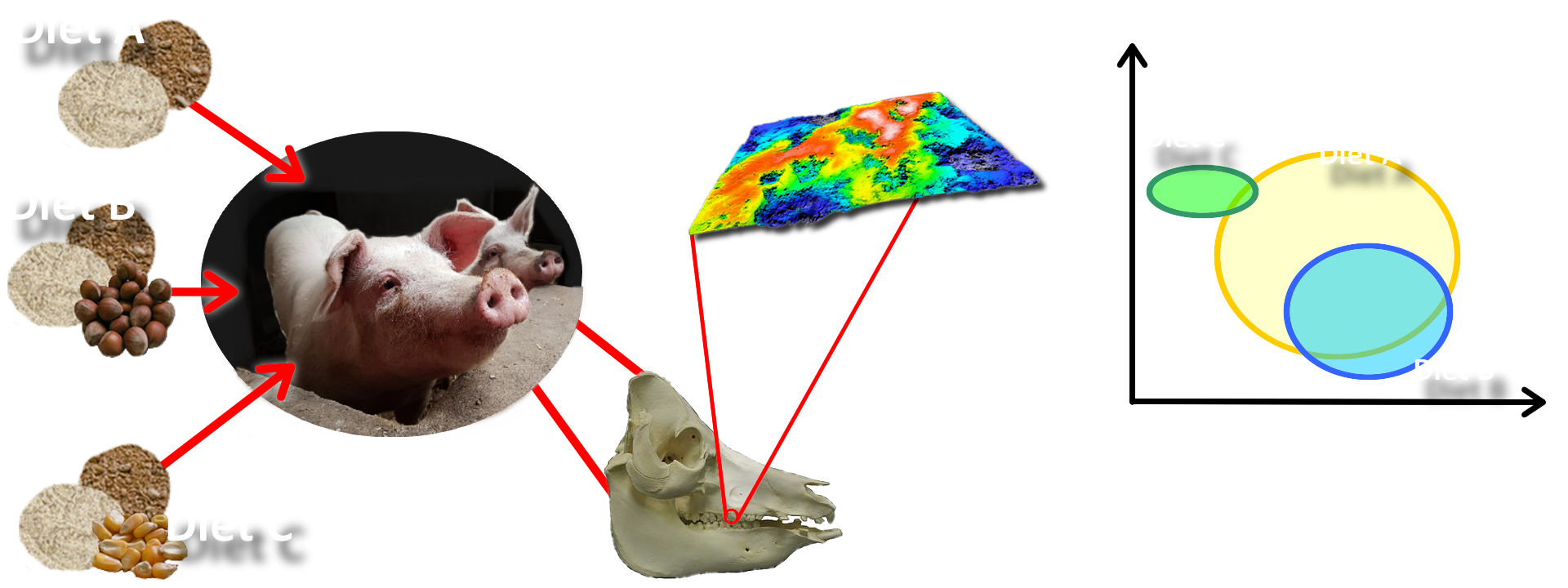Food tests: Pigs
Pigs are an ideal model for studying the diets of primates and hominins in particular. Indeed, pigs and hominins share a similar dental morphology (known as bunodont) and remarkable dietary plasticity.
Feeding trials on pigs were carried out as part of the ANR Diet-Scratches and ALIHOM regional projects at the GenEsi-INRA unit in Lusignan-Rouillé.
Pigs were divided into groups and fed different diets (basic flour alone or with hazelnuts, barley grains, corn grains, etc.).

The results of these feeding trials will make it possible to test several hypotheses (see below):
Hypothesis: Does consumption of hard seeds influence microscopic tooth wear in premolars and molars?
Protocol: Samples from 29 pigs were divided into four groups, each fed a different diet: 10 hazelnuts with shell per day, 20% corn kernels, 30% barley kernels or 100% cereal flour. The shearing and crushing facets of molars and deciduous premolars were studied for each specimen.
Results: Sub-sampling analysis showed that the consumption of different grains generated different micro-wear patterns, mainly impacting parameters related to the relief of wear surfaces. The combination of shearing and crushing facets in the analyses enables more robust discrimination of dietary groups.
To find out more: https://doi.org/10.1016/j.palaeo.2021.110415
Hypothesis: Does the consumption of hard seeds influence the morphology of the mandible?
Protocol: Samples from 29 pigs were divided into four groups, each fed a different diet: 10 hazelnuts with shell per day, 20% corn kernels, 30% barley kernels or 100% cereal flour. The shearing and crushing facets of molars and deciduous premolars were studied for each specimen.
Results: Sub-sampling analysis showed that the consumption of different grains generated different micro-wear patterns, mainly impacting parameters related to the relief of wear surfaces. The combination of shearing and crushing facets in the analyses enables more robust discrimination of dietary groups.
To find out more: https://doi.org/10.1002/ar.24895
Work in progress…
Funded by


Partners and Collaborations









